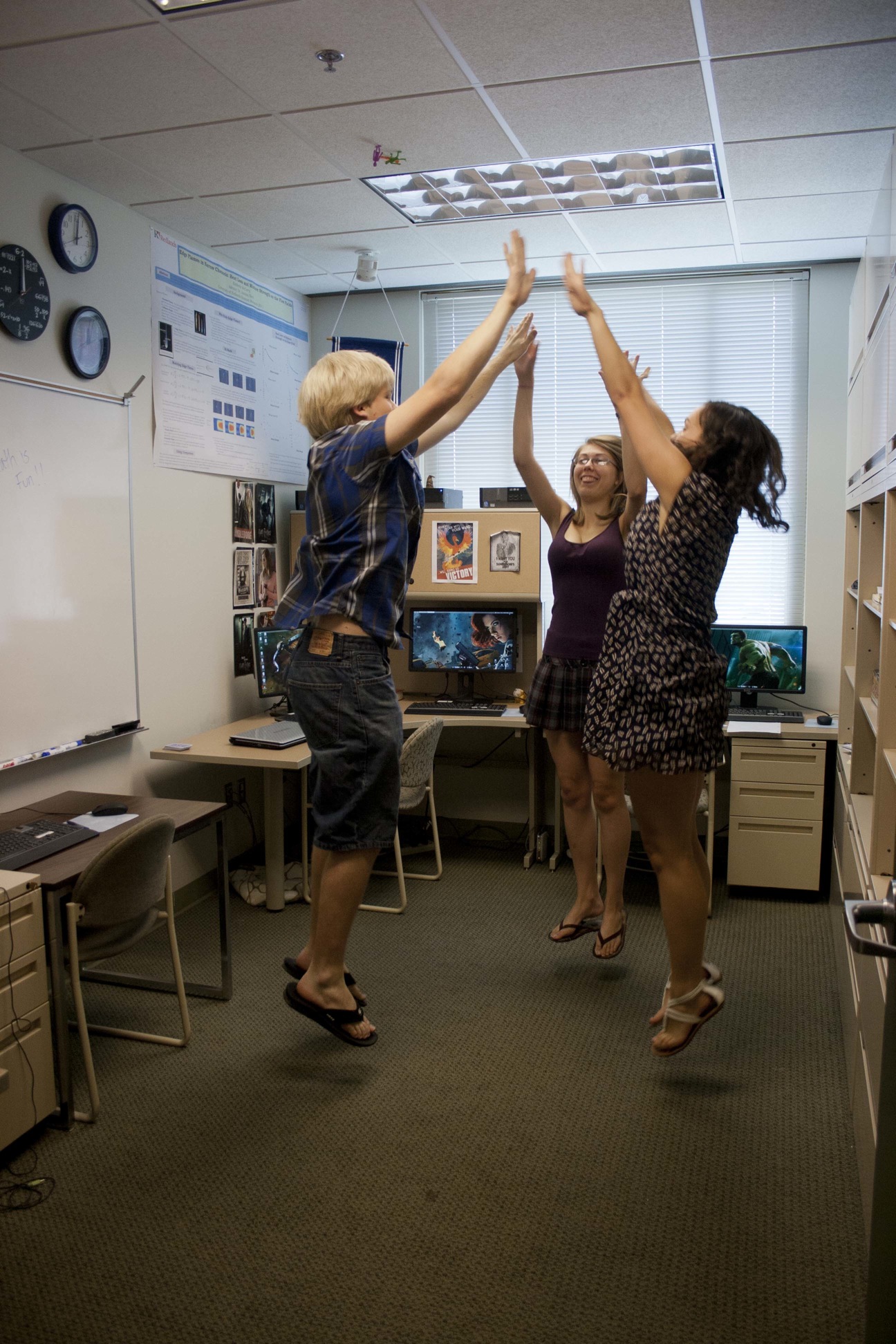-
Undergraduate Research
Undergradate research has been a big part of my focus. Here is a list of some of my students and their wonderful accomplishments:

Tristan Skraber Mathematical Modeling of Migration. (June 2017 - present)
Papers A guide to calculating habitat quality metrics to inform conservation of highly mobile species. Natural Resource Modeling. (Accepted for Publication - 2017)
Freeman Levine Heat Conduction and Flame Dynamics. (June 2013 - May 2015)
Presentations
Presentation - Southern California Conference for Undergraduate Research 2013
Presentation - Pacific Coast Undergraduate Mathematics Conference 2014
Posters Poster - National Joint Mathematics Meeting 2014
Casey McGrath Non-Symmetric Edge Flames in a Narrow Channel. (June 2011 - May 2014)
Presentations
Southern California-Nevada Section Fall Meeting 2011
University of Redlands Math Department Invited Talk 2011
Southern California Conference for Undergraduate Research 2011
Posters
34th International Symposium on Combustion, Warsaw, Poland 2012
National Joint Mathematics Meeting 2012 (Awarded 2012 JMM Outstanding Presentation
Kim McCarty
Transforming Edge Flame Code: Fortran to C++. (June 2012 - August 2012)
The Effects of Flow Fields on Edge Flames in a Narrow Channel. (June 2011 - August 2011)
Posters
Southern California Conference for Undergraduate Research 2011
Casey Peters
Microcombustion Research - Reignition Patterns in Experimental Microcombustors. (June 2012 - Present)
Kim Vilimas
Mathematical Modeling Interactions Between Human and Fish Populations: A Bio-Economic Approach. (June 2012 - August 2012)
Jared Duchen
Mathematical Modeling Interactions Between Human and Fish Populations: A Bio-Economic Approach. (June 2012 - August 2012)
Duncan Ashby
Edge Flame Reignition and Heating of Channel Walls. (June 2011 - May 2012)
Posters
National Joint Mathematics Meeting 2012
-
Edge Flames
The primary focus in my graduate research was studying the dynamics of flames in micro channels. In industry, many scientists are interested in developing micro-combustion devices both for power and heat generation. Devices that are carried into space must be small and lightweight, and combustion provides more energy per unit volume than batteries or other power generation methods. Thus, the development of micro-combustion engines and heat sources could be important in our exploration of space. The problem with flames is that they are hard to predict, they have complicated dynamics, and in many situations they are not well understood. Much of the current experimental research in flames concerns the development of micro-combustion devices and research is showing some surprising results. First, experimentalists find that flames can be sustained in devices that are much smaller than the previously accepted quenching limit, or minimum dimension. Second, when these flames are sustained they have surprising behaviors. For example, experimentalists see a series of flamelets, tiny independently moving flames, extending along the length of the channel. They also see flames that jump back and forth along the channel length and move upstream in flame ``waves." All of this motivates my current work, which takes a theoretical look at flames in order to predict how the use of different gases, materials, configurations, or flow conditions affects the behavior of flames in narrow channels.
This system is approached first using a diffusive thermal model to investigate thermal instabilities and then from hydrodynamic perspective where both the flame and the underlying flow are investigated.
-
Migration Modeling
Another area of research is a collaborative project at the National Institute for Mathematical and Biological Symbiosis. This work involves estimating the area specific importance of habitat on migrating species.
Migratory organisms spend portions of their annual cycle in locations separated by space. Our overall project objective is to develop a comprehensive model for estimating the contribution, or value, of discrete habitat areas. We aim to develop a spatial model estimating the relative importance of areas used by a migratory population. Our current continuous, energy based, model tracks migrant energy levels and population densities along the migration paths that connect wintering and summer breading locations, represented as nodes. We allow for a predator prey relationship between the migrants and the energy supplies both at the nodes and along the paths. This model leads to a coupled system of coupled ordinary differential equations and partial differential equations solved on a network. Thus the system must be numerically solved.
-
Data Science and Machine Learning
My newest area of research is work in the area of Data Science and Machine Learning. I am working on two new projects in this area.
My most complete area of data science research is in studying number theoretic objects using the data found on the LMFDB (L-functions and modular forms data base.) One example of this research explores patterns in mathematical objects called Maass forms using data science techniques. We discovered that when we average certain measurements of these forms, we see patterns similar to the "murmuration" effect observed in flocks of birds – where they move in coordinated, complex ways. We studied whether we could predict the rank of these curves given the coeeficients of their Fourier coefficients. In another paper we extend our analysis to a broader group of objects, L-functions, and use finitely many of their Direchlet coefficients to predict order of vanishing.